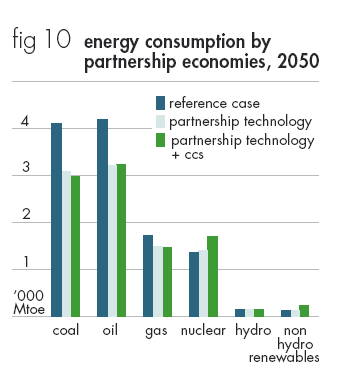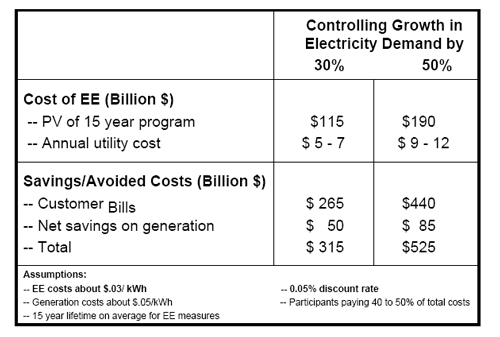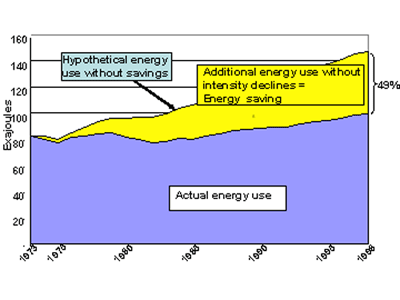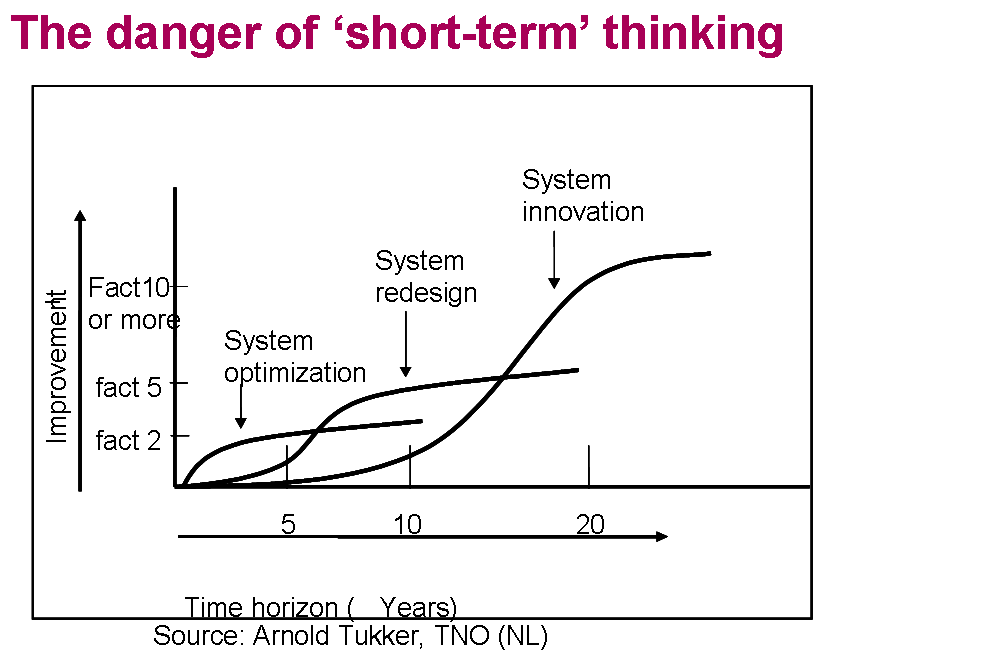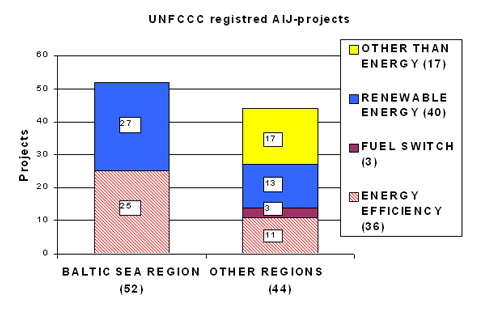Producing Energy by Conserving It - How a National Conservation Program Could Cut Our Needs Without Creating Hardship
This text was written by Lee Schipper and published in Washington Post 1977 and is now re-published with the authors’ permission. What has happened since?
WE ARE bombarded with ingenious new ideas to create energy. The cold fact is that, for the next quarter century, the best way to produce more energy is to conserve it.
If we in the United States fully utilize all the known methods to us energy more efficiently, there is no doubt that energy needs will grow very slowly, rising by the year 2000 to only 50 per cent greater than today. Compared to industry and government forecasts of a few years back, this represents a saving of the energy equivalent of around 30 million barrels of oil per day.
The flawed Nixon-Ford reaction to the 1973 oil embargo and price increase, encourage by energy producers was virtually to ignore conservation and to concentrate on finding ways to increase energy production. Certainly, we must boost production of oil and gas and find new ways to dig and burn coal without pollution. And we must proceed with research into nuclear energy, geothermal energy and synthetic fuels.
No matter what we do, however, energy production costs will rise steadily for the rest of the century. It becomes increasingly cheaper - and, generally, cleaner and less risky - to save rather than find new resources.
Unfortunately, we are often given a false view of energy conservation by energy companies and even by some politicians. We are told that conservation means sacrifice and curtailment of human activities. It does not. It means more effective use of energy and our other resources
- in other words, doing better, not doing without.
The Swedish example is instructive. For every dollar of gross national product the Swedes use only two-thirds as much energy as we do. Various factors are involved in that dramatic contrast, but certainly energy efficiency is a major element.
Thus, autos in Sweden average 24 miles per gallon, as opposed to less than 14 gallons in the United States. In part at least, that is a result of tax policy - there is a 60 cent a gallon tax on gas and a weight-related tax on new cars.
In producing raw materials, Sweden generally uses less energy per ton than we do. This is not accidental but the result of installation of modern equipment and use of heat recovery techniques.
The interaction of high energy costs and informed policy in construction is striking. Space heating is Sweden is twice as efficient as in the United States. To put it another way, a home is Sweden requires only slightly more heat than a similary-sized dwelling in San Francisco, despite the great differences in climate. Insulation, solid construction and other weatherization practices make the savings possible.
Again, this is not accidental. Sweden’s mortgage law of 1957 gave homeowners and builders access to extra investment for energy saving features in homes; tought building codes assure that few sloppy building are built; inspections that include use of infra-red leak-seeking cameras, as well as training programs for homeowners and apartment and building managers, assure that, the system is efficiently run.
Nearly a billion dollars is available over several years in the form of government grants or loans towards energy conservation in public and private buildings in in industry. This amount is tens of times greater than the sums tappable for conservation here.
Most other industrialized nations have also begun major energy conservation programs, revising deemand forecasts downward considerably.
This despite the fact thatat even now they are generally more efficient users of energy than the United States, despite the fact that they have many unsatisfied demands for autos, appliances and homes.
Our Leaky Homes
WHAT about our own prospects?
Today 22 per cent of our energy goes to homes. This winters’s cold wave should have reminded us that many American homes are leaky. Most of the leaks, fortunately, can be plugged. Adding insulation, especially to the millions of bare attics, would save at least 30 per cent of the energy which goes to heat our homes. Thermostat setbacks to 65 degrees by day,
58 by night, would save another 20 per cent; weather-stripping and storm windows would further decrease the energy loss.
Our use of hot water within the home can also be rationalized. The methods are now available: insulation kits that fit over the jacket of water heaters, temperature setbacks to 120 degrees, installation o f inexpensive flow restrictors on hot water faucets.
Obviously, the possibilities are even greater in new homes. Recent research, as well as the example of homes actually built, suggest that it would be easy in mild climates to cut heating needs by one-half and possible to reduce requirements by three-quarters. The sample homes are less drafty than conventional homes. They are better insulated at slightly higher cost, but that investment is offset by reduction in the size of heating-cooling units and lower fuel bills.
New applances can also help. Microwave ovens use less energy than conventional electric cooking, and a new generation of kitchen gadgets - such as the hamburger cooker - save energy by heating only the food, not the oven or the entire kitchen.
A redesigned frost-free refrigerator, studies shows could use half the electricity required by comparable models today. True, the purchase price would be 10 to 5 per cent higher, bu the extra investment could be won back through savings in electricity bills in the space of a few years. Even now, efficient models can be bought at no more cost.
Suppose that consumers ignore the more efficient refrigerators.
Nationwide, by 1990, the utility companies would have to build at least eight large power plants at greater expense and there would be inevitable further costs - construction of transmission lines, fuel use, maintenance costs, pollution.
There is some hope in the fact that government agencies, consumer organizations and even utilities are beginning to provide consumers with information on the ginning to provide consumers with information on the “life cycle” cost of operating appliances and even homes. If consumers can be convinced to take these total costs into account, they and the nation will earn handsome dividends.
Solar heaters, too can save money in an era of rising energy costs.
Solar water heating is particularly attractive today, except where controlled fuel prices are low.
But some architects and engineers have pointed out that, if we would design our homes with care in the first place, we could use the sun to eliminate perhaps as much as 80 to 90 per cent of the heating/cooling cost.
The trick is in “passive” solar conditional. Large masses of insulation or concrete will absorb solar radiation through south-facing windows in the winter daylight hours and re-radiate this stored heat during the evening hours; shades and overhangs over the windows will prevent the sunlight from entering the building during the warmer months. Carefully planted deciduous trees would provide shade in summer; in winter, with the tree-bare, the sun would filter into windows and walls.
The prospects for such “passive” solar homes are so bright that the addition of an active solar collector system - including pipes, water storage and pumps - may prove unnecessary or even uneconomic. Whatever remaining space heating and air conditoning would be needed could be supplied by relatively minute quatities of fuel or power.
In overall terms, if we tap both conventional and new creative resources, we should be able to reduce energy use in existing homes by 20 per cent by 1985. And within a few years, most new homes should require 40 to 50 per cent less energy than comparable homes of today.
Common Sense
EVEN GREATER savings are possible in commerc buildings, for many of them were carelessly designed in a period of cheap energy. Experience demonstrates that it is possible to reduce energy costs in existing buildings by 25 per cent with little additional equipment. New business structures, if properly designed, will require half or less the energy previously thought necessary. The new California State Office Building in Sacremento, as architecture professor Edward Dean of the Berkeley faculty put it, “will substitute common sense, new technology and good design for 80 per cent of the energy otherwise required.”
Take the case of daylighting.At the Lawrence Berkeley Lab, Prof. A.
Rosenfeld employs Mylar strips on the upper edges of venetian blinds.
The Mylar reflects sunlight onto the ceilings of each perimeter room, replacing great quantities of lights, which in turn would have required air conditioning for heat removal.
Withdows of existing and new buildings can be shaded so that little sunlight leaks in during the warm months (except for that permitted for daylighting), while maximum sunlighting and, therefore, heat capture are assured in the winter when the sun is low. It is such ideas, dormant for years when energy was unimportant, that make the conservation potential so attractive.
Innovations of this nature also lower construction costs because they eliminate the waste in climate control systems. Overall, by proper design, we should within a few years be able to reduce the energy costs in existing buildings by 25 to 33 per cent. In new buildings, the savings could range anywhere from 33 to 80 per cent.
Industrial Housekeeping
INDUSTRY uses 42 per cent of our energy today. Most of that energy provides heat, not power, and so possibilities for immediate savings are easy to spot - waste heat, steam leaks, missing furnace insulation, oven doors carelessly left open, badly tuned boilers. In the past the low cost of energy enabled most firms to forget good housekeeping. Higher fuel costs should assure that industry will reduce the energy requirements of existing equipment by 10 to 15 per cent in the foreseeable future.
Potential improvements in effectiveness are much greater because of the simple fact that use of heat in most industries is so inefficient.
Indeed, research by the Thermoelectron Co., of Waltham, Mass., indicates that in most cases industrial heat use is less than 20 per cent efficient. The company’s scientists believe great savings are possible, through the use of new design and technology, in the process industrial which use the largest percentage of our industrial energy: papermaking, oil refining, steel and aluminum, chemicals, cement making. These conservation practices will lower costs. Indeed, in the past, industry continually lowered energy requirments while increasing productivity.
Thermodynamics, the science of energy use, is still insufficiently appreciated in industry. Charles Berg, former chief engineer with the Federal Power Commission, contends that many processes cosidered efficient are really wasteful. In many metal fabrication processes, for example, the material is constantly heated, cooled and reheated. Berge argues that there is an urgent need for increased research in basic industrial processes.
The very notion of waste heat is under attack. What happens to the hot gases that emerge from today’s high temperature furnaces and ovens?
Though it is true that more and more factories use the exhaust to heat incoming air or materials, most gases are vented to the atmosphere, wasted. And yet high temperature heat is ar resource - it can make steam to run electrical generating equipment, it can be piped for low temperature heat use, it can even be sold to surrounding communities for use in home heating, a standard practice in Sweden.
The most important of these heat-using processes is called cogeneration, meaning the simultaneous creation of electricity and usable heat. Though lagely neglected in the United States, this combined cycle process, engineers believe, can generate electricity and heat with four-fifths to three-quarters as much fuel as when the heat and electricity are produced separately.
The Thermoelectron firm, which has installed cogeneration equipment in many countries, may be considered an interested party, but there is reason to respect its view that at least a quarter of the nation’s electrical needs could be generated “by recovering waste heat and by using combined cycles (cogeneration).” A study directed by Dow Chemical points to another advantage noting that use of cogeneration would save billions of doolars in capital outlays. But electric utilities have shown considerable resistance to this more efficient competition from industry.
Overall, there is no reason why American factories should not be able to institute energy savings of 10 to 20 per cent by 1985 and 20 to 50 per cent by the year 2000. Smaller savings should be possible in construction, agriculture and energy extraction itself.
The Gas-Guzzlers
TRANSPORTATION uses 25 per cent of our energy, and automobiles alone consume half of this.
The possibilities for conservation are obvious. Trucks can be redesigned to reduce wind resistance and rolling friction and to utilize more effective enginess. By the 1980s, long-haul trucks should require 20 per cent less energy than today’s models. Small trucks, while not as significant in the full picture as highway rigs, can make even greater proportionate savings; inefficient, high horsepower models should be replaced by lighter models with four-cylinder gas engines or diesel motors.
Moreover, changes in freight handling procedures should assure that trucks as more fully utilized. The simplest but perhaps most important change would be to permit interstate trucks to carry full loads in both directions rather than return home empty.
Strangely enough, today’s commercial aircraft fleet suffers from similar problems - inefficient motors, designs which increase wind resistance and, worst of all, under-utilization. An example of what can be done when necessity demands is the fact thats, since the 1973 crisis, the percentage of occupied seats in commercial planes has risen to the point where we are saving at least 5 per cent of the energy required to move people.
New designs should reduce airline energy use even further. By the 1990s we should have airliners requiring 60 per cent as much fuel per passenger as today’s models.
What of the automobile? We can double the mileage of our auto fleet with only a slight increase in the cost of new cars. In the longer run even greater increase are possible. Since most cars run with more empty than full seats, smaller cars seem acceptable in theory.
Incentive is important to improving the efficiency of autos, especially to meet the 27.5 MPG target mandated for Detroit to Congress. Whether consumers actually buy the right proportion of small cars that satisfy the standards depends on whether Congress will enact both a gasoline tax, affecting existing cars and driving in general, and a tax on the weight or horsepower of new cars.
The existing law tries to force Detroit to think small while consumers are tempted to buy large. Changing habits with taxes may be uncomfortable in the short run, and Detroit will resist, but the long run savings are too great to ignore.
Surprisingly, mass transit does not figure prominently in energy conservation scenarios in the near future. Only in the long run, when properly designed transit systems stimulate careful suburban growth mated to revitalized central cities, will transit make an important dent on travel - and energy use.
To summarize, prospects for conservation in transport use of enegy are great. Auto fuel use should soon begin to decline. It is realistic to believe that the projection - made before the 1973 crisis - of auto fuel use in the year 2000 can be reduced by at least 40 per cent and perhaps as much as 60 per cent. The very volume of travel will grow more slowly than in the past.
It is clear that the overall potential for reduction of energy needs to perform key tasks - production, space conditioning and transportation - can be enormous in the medium and long term. Modification of existing buildings and factories and smaller automobiles will have the first impact (during the next five years) while replacement of inefficient appliances, industrial plant and buildings goes on at a slower rate rate but begins to add up to larger savings in the 1980’s. Many who have looked closely at the uses of energy see a reduction of nearly 40 per cent of the energy used per unit of activity compared with the projections offered by the Bureau of Mines a few years back. Since these results will not appear immediately, however, Congress, the President and the American people will have to be patient.
It is neither reasonable nor necessary to expect people to give up basic conveniences. But small adjustments in behavior patterns - turning termostats down in winter, shutting curtains at night, generally exerting more care in energy use at home, at work, on the road - will result in considerable savings.
And gradual, evolutionary changes in American life-styles can have and energy-saving impact. To give but one example, careful urban and land-use planning could have a tremendous effect by permitting us to live near to work and services and by providing the patterns of living and community necessary if mass transit is to increase its share of passenger traffic.
But issues of urban planning mass transit, railroads versus trucks, urban sprawl vs. high density apartment living, while they affect energy needs enormously, must not be decided solely on the bases of their energy impacts. Thus, should we remove the tax deduction for mortgage interest payments solely because this sudsidizes single family homes over apartments dwellings and encourages greater use of autos and heating?
Clearly, the Carter administration decisions on energy must take into account the broader questions of lifestyles and national goals.
At the same time, it is evident that, with education, government and business leadership, and a consensus on the reality of the energy problem, it is likely that Americans might reduce energy needs at least 10 per cent below the savings offered by technical means alone, over the next few decades. In the long run the changes could be even bigger.
The Obstacles
NATURES LAWS, our technological capacity, our intellectual ingenuity, the adaptability of our people - none of these stands in the way of energy conservation. What, then, is delaying realistic conservation policy and action?
Perhaps the greatest obstacle is the myth of cheap energy. The cost of adding one barrel of oil or any other form of energy of our supply is considerable greater today than what we charde ourselves when we use that energy. This is what economists call the diference between the “marginal cost” (of new supply) and the “average cost” (of all existing supply). If we were to take the higher “marginal costs” into full account, the resulting rise in prices would be dramatic - and, doubtless, so would our conservation effort.
But price controls and most utility rate structures for electricity and gas do not yet allow us to practice “marginal cost” pricing. Therefore, it is crucial that political leaders and the public recognize that our energy prices are unrealistically low, that in a sense we live in a fool’s paradise.
The picture is also distorted by our national refusal or inability to include the social and environmental costs of energy is pricing.
Deep-mined coal may be cheap and it is often used inefficiently, but the taxpayer carries the burden of black-lung rehabilitation for the coal miners who dig that coal. Strip-mining, auto pollution, industrial emissions, nuclear risks also have their unpaid costs.
There are other pricing distortions. Utilities now are campaigning to increase the tax credit when they invest their income in new capacity.
This would amount to a subsidy. The oil and gas depletion allowance is also a subsidy. But homeowners who take the trouble to insulate their dwellings do not receive similar tax credits. Thus, the government rewards production and inhibits thrift.
Another barrier to conservation is the stance of many important industries. Some oil companies and electricity producers persistently misrepresent energy needs and conservation prospects. The auto industry drags its heels and one of its top leaders recently blasted the idea of a tax on gas-guzzling cars.
Some in industry like to tell us that the “free market” will handle our problems. But the market is not and cannot be free - the federal government has subsidized energy in some area, held the price down by controls in others, regulated the activities of energy producers to protect the environment and the public.
The Actions Needed
WHAT can be done? It is clearly in the national interest for the government to step in with enlightened regulations, a flow of helpful information and direct aid. Some of the required steps are obvious:
Efficiency standards for cars, trucks, appliances and buildings are needed, because the producer pays little attention to operating costs and the buyers usually is concerned only with the purchase price.
Intervention here will, it goes without saying, increase the overall efficiency of the economy.
Consumers and small businessmen often have difficulty raising capital at low rates for improvements Banks and, indeed, utility companies should be encouraged to assist in the financing of energy efficiency, for measures such as insulation and double-glazing represent low risks with high payoffs.
Tax incentives would encourage businessmen and consumers to take conservation steps. Action here is urgently needed because, as one insulation firm executive put it, “uncertainly is deadly. People are waiting for a firm policy before they decide what to do.”
Standards for new factories are probably unnecessary since, in the nature of things, plant designers must take long-term energy costs into account - their products would be too costly if they did not. But it is clear that govenment must utilize progressive regulations to encourage auto producers, utilities and manufacturers to avoid waste in new products and in existing plants.
Rising costs will hit the poor hardest. The national government must provide a buffer for that section of the population in the form of direct cash aid and financial help and advice in conservation measures.
But we cannot delude ourselves by maintaining the fiction of low energy prices for all consumer. The public must be made aware of the rising real cost of energy by means of gradual and predictable increases in energy prices. Knowing what to expect, buinessmen and consumers could plan accordingly.
Such realistic price increase, however, should not result in undue windfalls for energy producers. The answer, a virtual necessity, is a tax on energy. The tax would have to be large, increasing over a period of years to as much as $6 per barrel of oil. This would work out to about $1 per thousand cubic feet of gas, $25 per ton of coal, 1 cent per kilowatt hour of electricity.
This would bring enormous sums of money into the government, sums that would have to be returned to the economy immediately. Refunds could take place by reducing other taxes, especially more regressive ones like sales taxes. Some of the funds could go directly to aid low-income consumers, or provide funds for energy conservation loans and extension services. Or all the money could simple be rebated directly to consumers.
What is important is that we rise the cost of energy relative to other resources or goods and services without removing anything from the economy. The alternative is to allow the energy producers, or OPEC, to extract higher energy prices or run the risk of either sudden or gradual supply shortfalls. The faster the demand grows, the more the real cost of production rises. The imposition of a tax could slow this escalation.
Ultimately, we own our own domestic resources: We may be selling them off too cheaply.
Is energy really scarce? Pronouncements from industry, consumerists and even environmentalists which quote only amounts of fuel in the ground are of little meaning. We need to take into account the cost of these supplies, extraction technology and the environmental risks as well.
Moreover, the argument that some producers are “holding back” supplies is not important in the long run; the quantities involved are too small to make much of a difference. Given all the uncertainities in future supplies and costs, however, it is far better to hedge our bets with conservation today, especially against threats of embargos or cruel winters.
Helping the Economy
THERE IS no logical reason to fear that the slower growth of energy consumption will drag down the overall growth of the economy. An interim report of an ongoing National Academy of Sciences energy study had this to say: “There exists substanial technological leeway, over the long term, in the amount of energy required for a given rate of growth of GNP and employment.”
Conservation will allow us to save tens of billions of dollars of energy-related investments and expenditures. These sums could be funeled into the rest of the economy, which produces considerably more employment per dollar invested or spent. For example, efforts to build better homes and save energy in factories inevitably will result in increased demand for construction labor. On the other hand, without the benefits of significant conservation, consumers and businessmen will have to sacrifice increasing shares of present and future income to pay for more expensive and underutilized energy. Thus, conservation is a boon to employment and the economy as a whole.
Is conservation sacrifice, as the administration is fond of murmering?
Not if we acknowledge that energy is scare and appreciate the economic benefits of more effective use. Not if we take into account reduced risks to national security and the environment. Not if we take into account the downward pressure on energy prices that conservation exerts.
Not if we value reducting our imports of oil and gas.
Conservation is not always easy, but it demands less “sacrifice” than pushing for “too much energy supply, too soon,” as Berkeley Prof. John Holdren warns.
At today’s unrealistic prices, it is clear, we do indeed waste more energy than we import. If we utilize all the possibilities for improving energy use in the long run, much of our projected energy needs will become superfluous. But reducing waste entails a strong committment, to investment, adaptation and, most important, careful thought. As Kenneth Boulding, former president of the American Economic Association, put it: “Conservation is just thinking before using energy.”
Skrivet av Hans Nilsson, 2006-02-09.
(0) Kommentarer • (0) Trackbacks • Permalink




